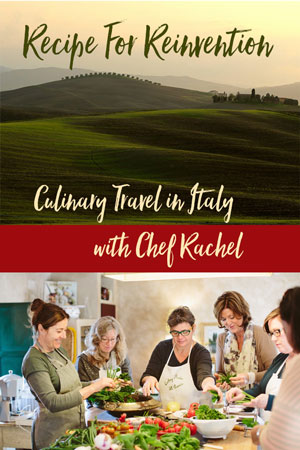One of the great resources we have at The French Culinary Institute is the online student portal. There we can stare at our grades (What!? A 93!? I got robbed!), read up on alumni news, scan the job listings, and my favorite section, the volunteer opportunities. As students, if we volunteer for a minimum of seven events we become eligible to receive the Outstanding Service Award at graduation. I guess the student in my class who does the most events wins…or maybe anyone who does at least seven gets one…I’m not sure, but it’s not really the point. (OK, I do like awards. I really want the award. But it’s still not the point.)
The point is that because of these volunteer gigs I’ve gotten to hand knives to Jacques Pepin and watch him cook and listen to him tell stories that amount to culinary industry lore by now; I’ve wielded an immersion blender in a gargantuan stockpot full of boulliabaisse made by Alain Sailhac of Le Cirque, The Plaza and 21 fame. I’ve prepped for a famous Hungarian chef who came in to teach a pastry class to amatuers and show him the picture of my Hungarian Viszla I had on my phone; and most recently I got to meet the mayor of New York when I volunteered to be among the vast crew assembled to put out a spread for Italian Heritage Day at Gracie Mansion. I’m a born and raised New Yorker and I’d never been to Gracie…it was a stroll into New York history. Even as I was charmed by the Victorian beauty of the house I knew right away that Mr. Bloomberg wouldn’t actually live there. It was creaky and old and quaint, not the east side power palace I imagined he would live in.
And for some reason I’d always envisioned Michael Bloomberg as this tall, powerful figure of a man. In my mind his billions translated to stature. I’m not a news watcher— I get most of my news from NPR or the internet or Sunday Times—so all these years I did not actually realize that Mayor Bloomberg is, well, SHORT! Someone amongst the many organizers of the event that day made sure the volunteers got a chance to line up ahead of hundreds of others who were eager to have a millisecond with Hizzoneer, shake his hand and get a picture snapped. So, I shuffled down the front porch of Gracie Mansion, clutching my requisite filled out mailing label, and as I came to the head of line and saw him I was struck speechless. He was so not what I had pictured! Then, I was literally pushed toward him—a photo needed to be snapped every few seconds if he was going to get through the throng by midnight—and he took one look at me in my “whites” and said loudly, “You must be a cook!” I just burst out laughing, found nothing clever to say back, and that’s when the shutter clicked.
The whole experience reminded me that my minds-eye version of life (or of celebrities) can be ridiculously outsized, or in this case, undersized. One thing that wasn’t undersized was the amount of food prepared for this event, and the amount of people who attended. Eight Hundred Italian American NewYorkers from the five boroughs flowed through the Gracie Mansion gates and passed under the tents in the yard to the tables laden over-flowing platters of food. I’d been there since 10 a.m. helping fill those platters and I was amazed at what could be produced out of the tiny kitchen in the house and the off-site kitchen set up in the far corner of the grounds under a another large tent. Italian restaurant chefs from around the city brought their signature dishes to be finished and served as well. What blew me away was that the executive chef at Gracie churns out 3-4 events like this on any given week at the mansion or at other venues around the city with a pretty tight staff. He seemed to be everywhere at once, a wild, adrenalized look in his eye by the time the party was in full swing. But at the beginning of my shift he was calm and took the time to set me up, give me a tour and make me feel like an important part of the team.
When I finally left there exhausted around 8 p.m. the party was winding down. I changed into my street clothes down in the musky bowels of the mansion and then headed out the gates along with others who had come for a special New York experience. I was handed a goodie bag as I left the grounds…some Italian chocolates, a bag of pasta, a tiny bottle of extra virgin olive oil and a brochure on the Italian-American Association of New York.
As I waited for my car in the garage across from Gracie I was served up a delicious slice of Italian-American life. About six of us, some couples, stood around waiting for our cars when a silver-haired man in a good suit and polished, expensive shoes strolled in to the garage like he owned it. The attendant who heretofore had moved at the pace of cold molasses sprung up on his toes and jogged to a spotless black Mercedes parked right opposite the cashier window on the ground level of the garage. This car had not seen the inside of the garage elevator that had whisked all of our cars away to some dark nether region in the building. The now eager attendant three-point turned the car with impressive precision and delivered it within inches of the silver fox’s shiny shoes.
I overheard the wife of one of the waiting couples lean over and ask the Mercedes owner, “How’d chew get yaw caw pawhked down heeya? Huh?”
If the faux-fur jacket and her big hair hadn’t screamed Staten Island already, her delightful accent confirmed it for me. The gentleman turned toward her, gave her a toothy, Rat Pack grin and mimed for her the close-to-the-body quick peeling off of paper money from a big wad. Then he winked and slid onto the buttery black leather seats of his waiting car, slammed the door and rolled away.
“He juiced him!” She whispered at the top of her lungs to her sheepish husband, a bluish-collar guy with a big belly and a shiny helmet of dyed black hair. “How come you di-int think ta juice the garage guy? We’d be outta heeya by now if you wasn’t so cheap!”
I laughed quietly and bit into the dense chocolate truffle from my goodie bag, savoring both the confection and this classic New York moment.






